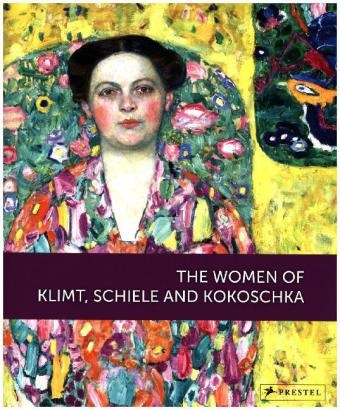Read more
Female portraits and nudes, mothers & children, and couples by the three most outstanding painters of Viennese modernism. In the early 20th century, the traditional relationship between the sexes was challenged by a number of social, economic,
and philosophical changes. It was above all the incipient
development towards gender equity that provoked vehement
counter-arguments. On the other hand, sexual liberation can
be seen as a common goal of men and women, since they
both sought to escape the restrictive moral taboos of the 19th
century. Gustav Klimt, Egon Schiele, and Oskar Kokoschka-then
the three most outstanding painters of Viennese modernism-
approached the subject matter generally referred to as the
"woman question" from slightly different, albeit overlapping
perspectives. The book will present an in-depth exploration of
these differences and similarities.
About the author
Agnes Husslein-Arco, geb. 1954, Kunsthistorikerin und Kunstmanagerin. Von 1996-2000 Vorstandsmitglied der Wiener Secession, von 1981-2000 Geschäftsführerin von Sotheby's Österreich. 1990-98 Director of European Development des Guggenheim Museums und 1990-2000 Organisatorin der Guggenheim Association Salzburg und des Austrian Guggenheim Advisory Board. Sie ist Mitglied des World Wide Teams for Contemporary, Modern and Impressionist Art. Von 2001-2005 war Husslein Direktorin des Rupertinums in Salzburg. Die Eröffnung des Museums der Moderne am Mönchsberg im Jahr 2004 ist auch mit ihrem Namen verbunden. Ab 2007 Direktorin der Österreichischen Galerie Belvedere.
Alfred Weidinger studierte Kunstgeschichte in Wien. Seit 2007 ist er Kurator und Projektmanager am Belvedere in Wien.
Summary
Female portraits and nudes, mothers & children, and couples by the three most outstanding painters of Viennese modernism. In the early 20th century, the traditional relationship between the sexes was challenged by a number of social, economic,
and philosophical changes. It was above all the incipient
development towards gender equity that provoked vehement
counter-arguments. On the other hand, sexual liberation can
be seen as a common goal of men and women, since they
both sought to escape the restrictive moral taboos of the 19th
century. Gustav Klimt, Egon Schiele, and Oskar Kokoschka-then
the three most outstanding painters of Viennese modernism-
approached the subject matter generally referred to as the
"woman question" from slightly different, albeit overlapping
perspectives. The book will present an in-depth exploration of
these differences and similarities.

